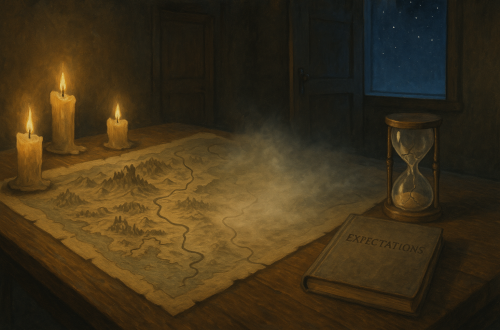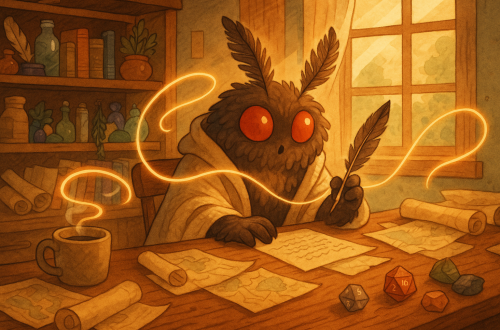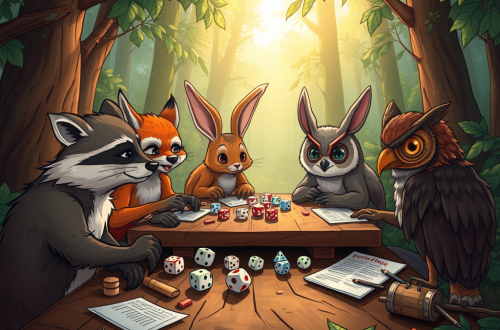Navigating Character Conflict
Character conflict starts innocently enough. Maybe the rogue snaps at the cleric during yet another sermon. Maybe the wizard implies the barbarian wouldn’t know a strategy if it hit them with a halberd. Maybe the bard steals the warlock’s boots again.
There’s a moment of silence. A beat. Someone looks up from their snack. Was that… in character?
Welcome to the fraught and fascinating world of in-character conflict—where drama meets danger, not from the monsters on the battle map, but from the very people you’re questing with. When handled well, it’s electric. When handled poorly, it can seriously wreck your table.
So how do you encourage compelling character conflict without it bleeding into real hurt feelings?
Why Character Conflict Is Delicious Storytelling
First, let’s be clear: in-character tension is not a problem. In fact, when it’s done right, it can be one of the most satisfying parts of a campaign. Characters with flaws, secrets, grudges, rivalries? That’s drama. That’s texture. That’s why we play.
Think of your favourite shows or books. Rarely do all the main characters get along perfectly. They argue. They make terrible choices. They disappoint each other. And then, once in a while, they forgive, grow, or at least agree to work together to kill the big bad.
Conflict is narrative gold. But only if your players are on board.
Player Over Character: The Golden Rule
Here’s your Golden Rule: no in-character drama is worth real-world discomfort.
Before your wizard dramatically threatens to abandon the party, make sure you, the player, are good with the group—and they’re good with you doing it. The rule is simple: if the tension isn’t fun for everyone, it’s not good tension.
Have an out-of-character check-in. Say something like, “Hey, just so you know, my character’s about to be a jerk—are you cool with that?” Or after a scene, check in with, “Was that okay? Want to talk about it?”
It might feel awkward the first time, but it’s far less awkward than a campaign crumbling because someone didn’t realize their character’s sass was actually hurting someone’s feelings.
This is also where your safety tools come in handy – like lines and veils or the X-card. If you haven’t set those up yet, you can check out this post for a breakdown of how they work and why you need them.
Talk About It Before It Happens
Ideally, you’ve already talked about this sort of thing in Session Zero. If not, there’s no time like the present.
Questions worth asking:
- Are we okay with PvP (player vs. player) dynamics? This can be theft, combat, rudeness, etc.
- Can characters keep secrets from each other?
- Are betrayal storylines on the table?
- What’s off-limits?
You don’t have to map out every possible interaction, but setting some ground rules helps everyone feel safe when things get messy.
Conflict in the Moment
When tensions rise mid-game, pay attention to the energy at the table. Are people laughing, leaning in, clearly enjoying the drama? Great. Keep going.
But if someone goes quiet. Withdraws. Stops contributing. Looks uncomfortable. That’s your cue to check in.
Use your meta-voice: “Hey, just to clarify—this is in character.” Or take a quick break and ask how folks are feeling. There’s nothing wrong with hitting pause.
And if you’re the GM, you can always toss in a well-timed distraction. Goblins. Fireball. Talking cat with urgent news. Whatever breaks the tension without dismissing it.
After the Storm
Some of the best post-conflict moments happen after the game ends. Debrief. Reflect. Laugh about how mad your characters got at each other.
You might be surprised how often players appreciate the drama—as long as they feel safe in it.
And if someone says, “Actually, that didn’t sit right with me”? Take that seriously. Apologize if needed. Adjust going forward. Nobody’s perfect, but everyone deserves to feel respected at the table.
When the GM Needs to Step In
Sometimes, it falls on the GM to mediate. If the tension feels off, check in with the players privately. If the same player always ends up on the receiving end of in-character aggression, that’s worth a conversation.
Remember, the goal isn’t to prevent all conflict. It’s to make sure the conflict serves the story, not derails it—or damages the players.
Final Thoughts: The Stage Combat of Roleplay
In-character conflict is like stage combat. It looks intense. It sounds dangerous. But under the surface, it’s carefully coordinated, based on trust, and always leaves room for a safe landing.
You don’t need to avoid character tension. Just make sure everyone knows the choreography. Then lean in, swing your narrative sword, and trust your table to catch you.




